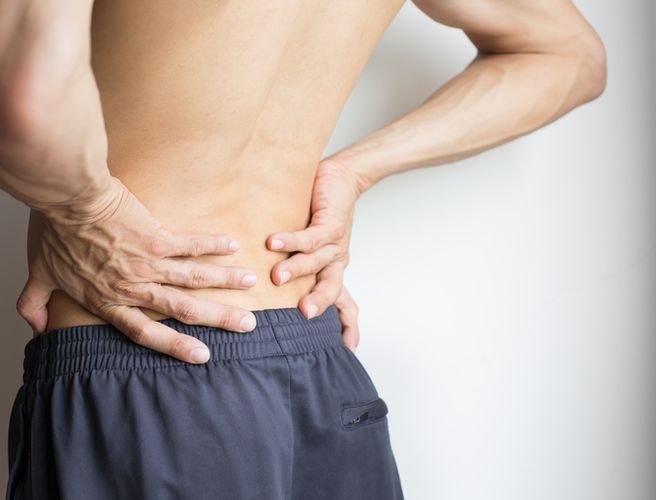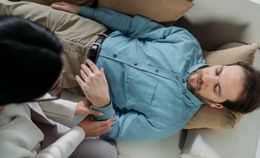Massage can be a great tool for athletes, whether your exercise regimen is as casual as a few jogs a week or as intense as competitive ultra marathon training. Whatever you do for fitness - from cycling to CrossFit to soccer - sports massage can support your efforts in several ways.
Although there are some common features of sports massage therapy programs, there is no one-size-fits-all sports massage.
Rather, sports massage encompasses a range of techniques that assist athletes with a variety of common problems and goals. Whether you're seeking relief from the stiffness of tight muscles and the pain of sore ones, struggling with injury recovery, or want to improve your athletic performance, a professional massage therapist can help you get the most out of your active lifestyle.
A therapist with sports massage training will work with you to identify your specific needs and devise a treatment program accordingly.
The Benefits of a Sports Massage Therapy Program
Whether your athletic goal is general fitness or maximizing your performance in a specific sport, the benefits of a tailored sports massage therapy program for anyone with an active lifestyle are numerous.
They can be broken down into three basic categories: relief of minor pain and discomfort caused by exertion, injury prevention and recovery, and performance improvement.
Symptom relief
Exercise taxes the body in order to strengthen it. This can naturally result in some immediate post-exercise discomfort nearly everyone has experienced: pain and stiffness.
The technical term for the ache you feel after exercise is delayed-onset muscle soreness, or DOMS. The pain most often occurs when you tax your body more than usual or in a new way, and it is actually caused by a form of temporary damage to the muscle.1
These microscopic muscle tears boost blood flow to the area, which is why you might notice mild swelling. The inflammation activates pain receptors. All of this is part of the healthy process of stressing and strengthening your muscles.2
Massage therapy is a time-tested method for pain relief from sore muscles, and it works by decreasing inflammation. Interestingly, some studies suggest that unlike other methods of reducing inflammation after exercise, such as icing muscles and taking pain medication, massage therapy might be uniquely beneficial to athletes in that it can reduce swelling and pain without also reducing the strengthening effects of exercise.3
Stiffness and increased sensitivity to movement is also a part of DOMS, and this too can be effectively relieved by massage. Massage techniques such as trigger point pressure, compression and cross-fiber friction help to release the muscle tension that causes stiffness, improving flexibility and range of motion.4 In other words, massage can help hasten the process of feeling fully mobile again after exercise.
Injury prevention & recovery
A regular sports massage program that increases mobility and flexibility can aid in injury prevention and healing, too. Maintaining a broad range of motion means your body can literally accommodate a greater array of movements without suffering damage.
Regular massages can help improve range of motion in similar ways to stretching: by increasing blood flow to muscles, breaking down scar tissue, and stimulating nerve endings. For this reason, some athletes and sports massage practitioners liken the benefits of sports massage for the body to to regular oil changes for your car: regular maintenance can optimize performance and prevent trouble down the line.5
Enhancing performance
Massage can boost sports performance in a few ways. First, speeding recovery after intense workouts and hastening the healing process after injuries can facilitate a more ambitious training schedule by reducing an athlete's downtime.6
Massage can also aid in relaxation. This can reduce stress and anxiety and improve sleep, supporting psychological and physical performance in social, professional, and athletic endeavors alike.7
Using massage to relieve temporary post-workout discomfort can also help more casual exercisers keep up a healthy fitness routine, by reducing some of the common psychological and physical barriers. If you're new to running and have an effective way to reduce the pain and stiffness your new workouts can cause, you can approach your routine with more confidence and enjoyment, making it more likely you'll stick with it.
Chronic pain conditions can be a barrier to exercise for many people. A regular therapeutic massage program that helps manage chronic pain can also reduce the barriers to a regular fitness routine and improve an individual's overall health and wellness.
The Bottom Line
Although elite athletes often tout the benefits of massage, you don't have to be a world-class competitor to reap the rewards of a regular sports massage therapy program. On the other hand, if you are an elite athlete, sports massage can offer a competitive edge, just like a crucial tweak to your nutrition or training protocol.
Talk to a professional massage therapist about how a routine sports massage program can help you advance and enjoy your active lifestyle.
References:
1 "Why do I feel pain after exercise?":https://www.nhs.uk/live-well/exercise/pain-after-exercise/
2 "Understanding Delayed Onset Muscle Soreness":https://www.verywellfit.com/muscle-pain-and-soreness-after-exercise-3119254
3 "Massage May Help Sore Muscles Recover":https://www.webmd.com/pain-management/news/20120201/massage-may-help-sore-muscles-recover#1
4 "4 Sports Massage Techniques to Relieve Sore Muscles":https://www.stack.com/a/sports-massage-techniques
5 "Injury Prevention: The Importance of Sports Massage":https://blog.alexandrasports.com/injury-prevention-importance-sports-massage/
6 "Massage's Effect on Injury, Recovery, and Performance: A Review of Techniques and Treatment Parameters": https://journals.lww.com/nsca-scj/fulltext/2010/04000/Massage_s_Effect_on_Injury,_Recovery,_and.7.aspx
7 "Is Nighttime Massage Key to Peaceful Sleep?": https://www.sleepadvisor.org/sleep-and-massage/















